| Solar System Dynamics & Planetology Group |
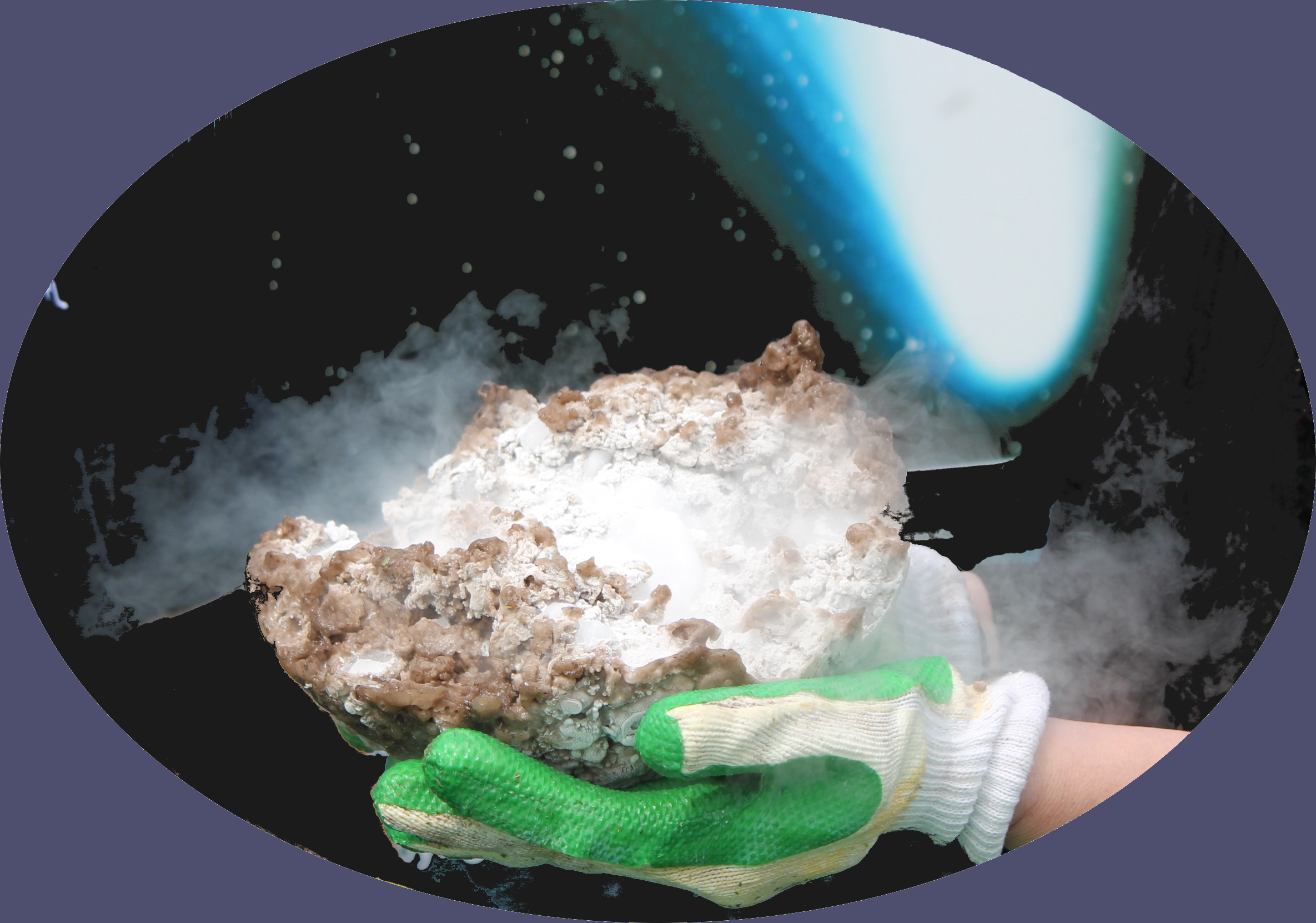 |
C/2007 Q3 Siding Spring |  |
| Solar System Dynamics & Planetology Group |
 |
C/2007 Q3 Siding Spring |  |
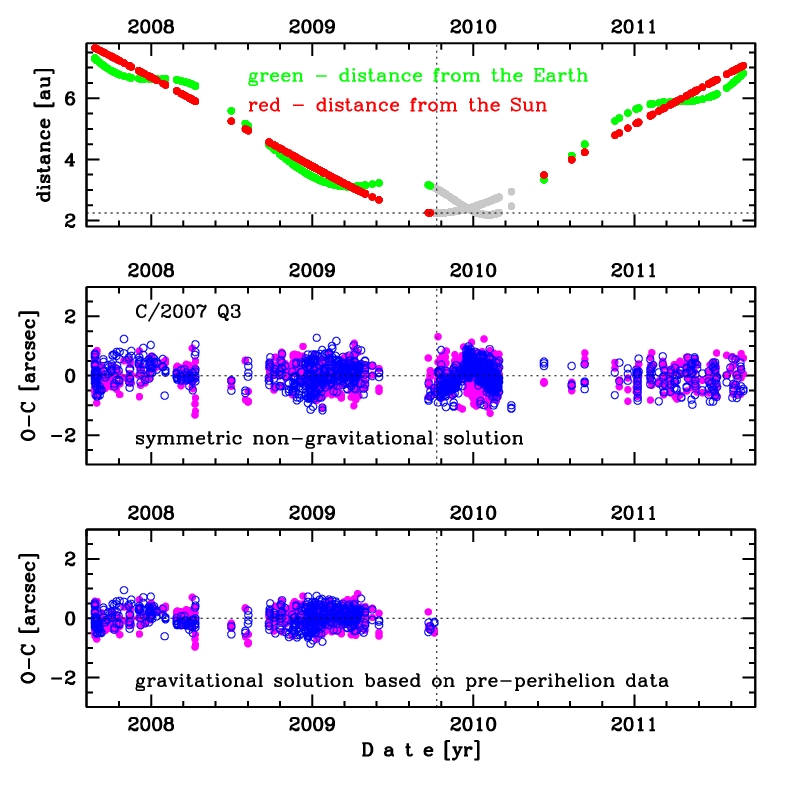
| number of observations | 1368 |
| number of residuals | 2658 |
| data interval | 2007 Aug. 25 — 2011 Sep. 25 |
| rms [arcsec] | 0.39 |
| orbit quality class | 1a+ |
| Epoch (TT) | 20091016.0 | = JD 2455120.5 |
| time of perihelion passage (TT) | 20091007.265422 | ± 0.000050 |
| perihelion distance | 2.25169273 | ± 0.00000065 |
| eccentricity | 1.00025939 | ± 0.00000171 |
| argument of perihelion[deg] | 2.090436 | ± 0.000012 |
| longitude of the ascending node [deg] | 149.412849 | ± 0.000008 |
| inclination[deg] | 65.650440 | ± 0.000005 |
| inverse semimajor axis [10-6 au-1] | -115.20 | ± 0.76 |
| Nongravitational parameters [10-8 au/day2] | A1 = 0.156 ± 0.180 | A2 = 2.675 ± 0.103 | A3 = 1.657 ± 0.037 |
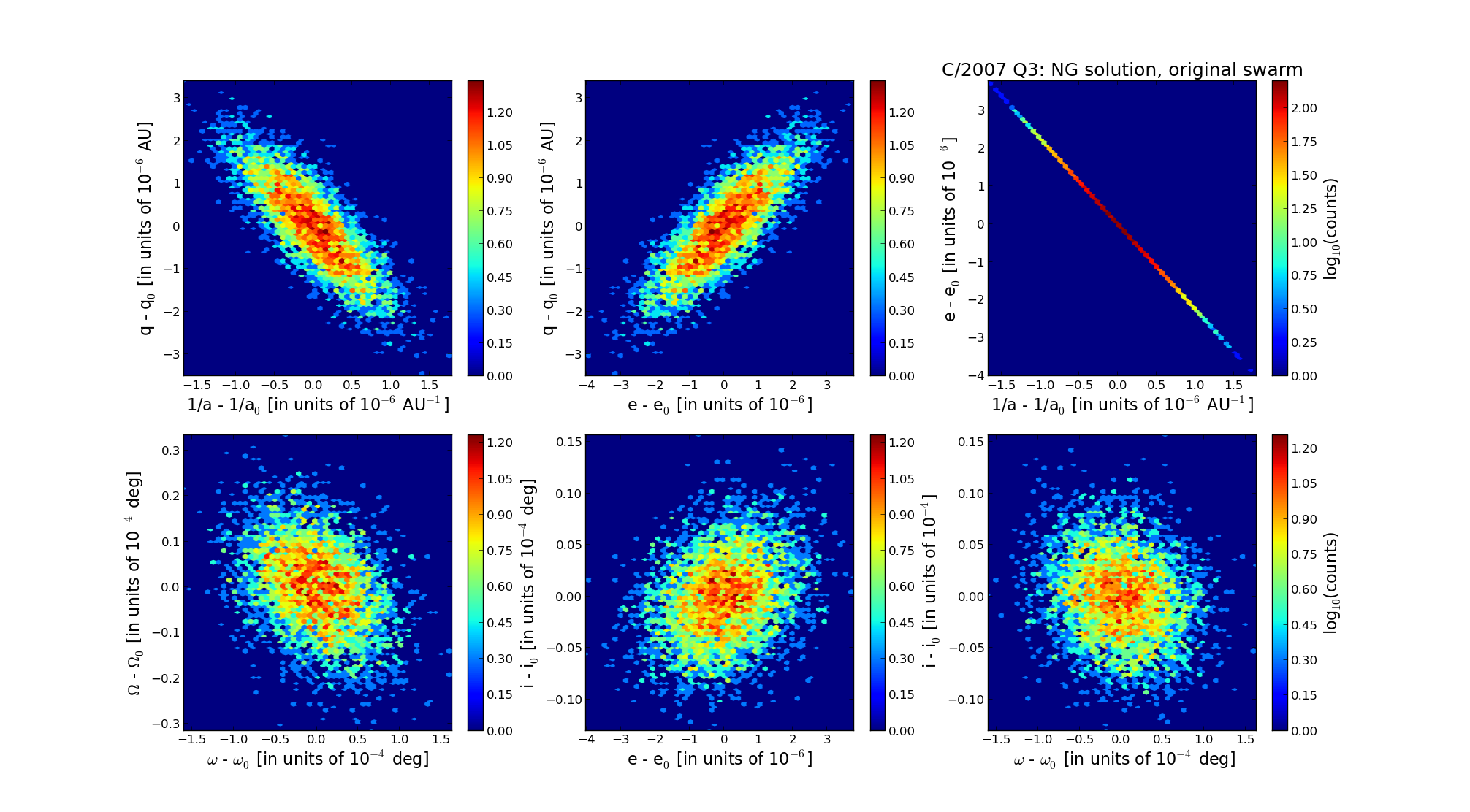
| Epoch (TT) | 17081213.0 | |
| time of perihelion passage (TT) | 20091007.093891 | ± 0.000114 |
| perihelion distance | 2.25546432 | ± 0.00000096 |
| eccentricity | 0.99991174 | ± 0.00000111 |
| argument of perihelion[deg] | 2.067338 | ± 0.000044 |
| longitude of the ascending node [deg] | 149.432081 | ± 0.000011 |
| inclination[deg] | 65.620443 | ± 0.000005 |
| inverse semimajor axis [10-6 au-1] | 39.13 | ± 0.49 |
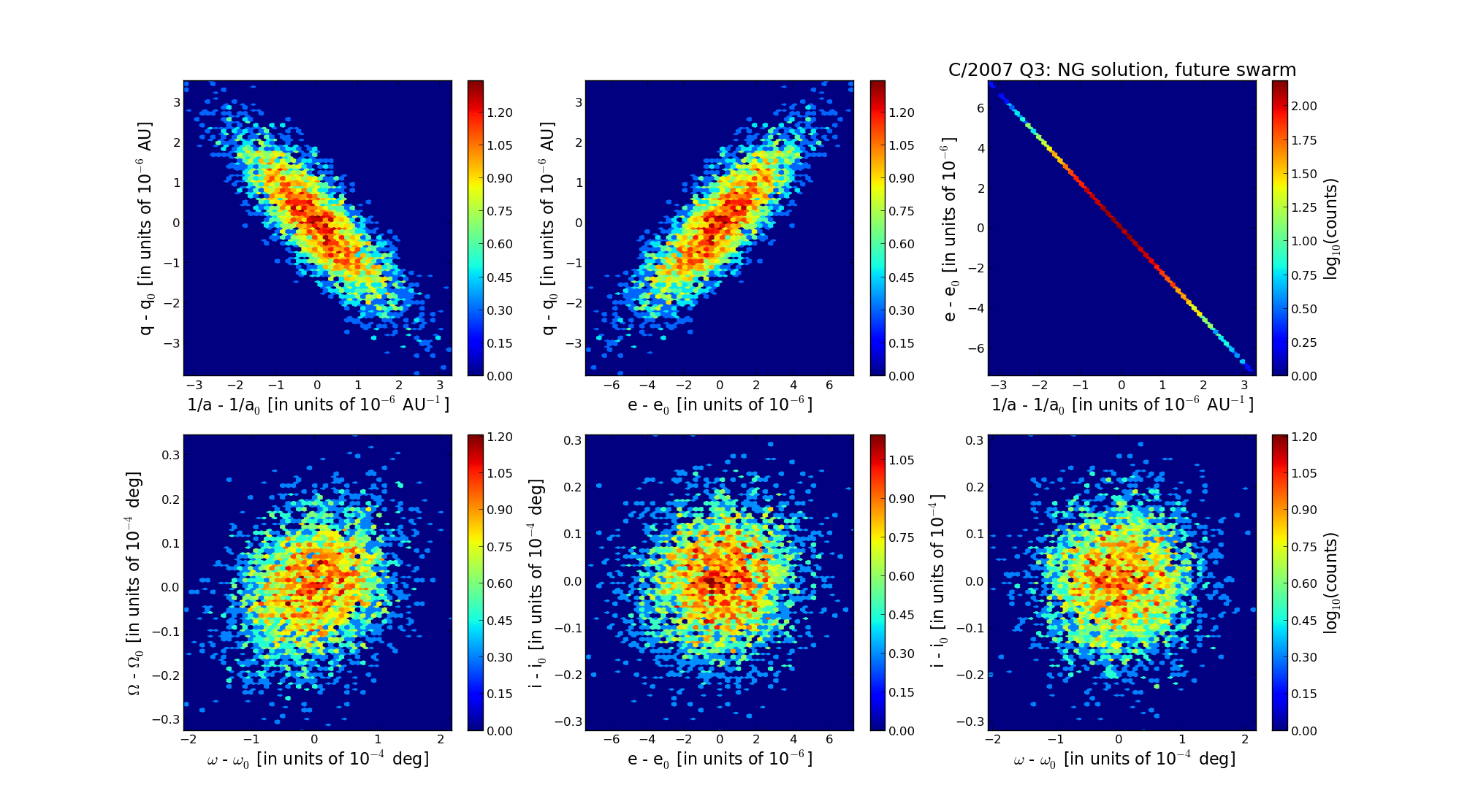
| Epoch (TT) | 23110706.0 | |
| time of perihelion passage (TT) | 20091007.623842 | ± 0.000160 |
| perihelion distance | 2.25375096 | ± 0.00000108 |
| eccentricity | 0.99973190 | ± 0.00000215 |
| argument of perihelion[deg] | 2.092374 | ± 0.000061 |
| longitude of the ascending node [deg] | 149.370279 | ± 0.000007 |
| inclination[deg] | 65.647925 | ± 0.000007 |
| inverse semimajor axis [10-6 au-1] | 118.96 | ± 0.96 |
| number of observations | 568 |
| number of residuals | 1112 |
| data interval | 2007 Aug. 25 — 2009 Oct. 3 (pre-perihelion data) |
| rms [arcsec] | 0.30 |
| orbit quality class | 1a+ |
| Epoch (TT) | 20091016.0 | = JD 2455120.5 |
| time of perihelion passage (TT) | 20091007.267137 | ± 0.000153 |
| perihelion distance | 2.25167770 | ± 0.00000128 |
| eccentricity | 1.00022406 | ± 0.00000119 |
| argument of perihelion[deg] | 2.091211 | ± 0.000046 |
| longitude of the ascending node [deg] | 149.413010 | ± 0.000013 |
| inclination[deg] | 65.650162 | ± 0.000004 |
| inverse semimajor axis [10-6 au-1] | -99.51 | ± 0.53 |
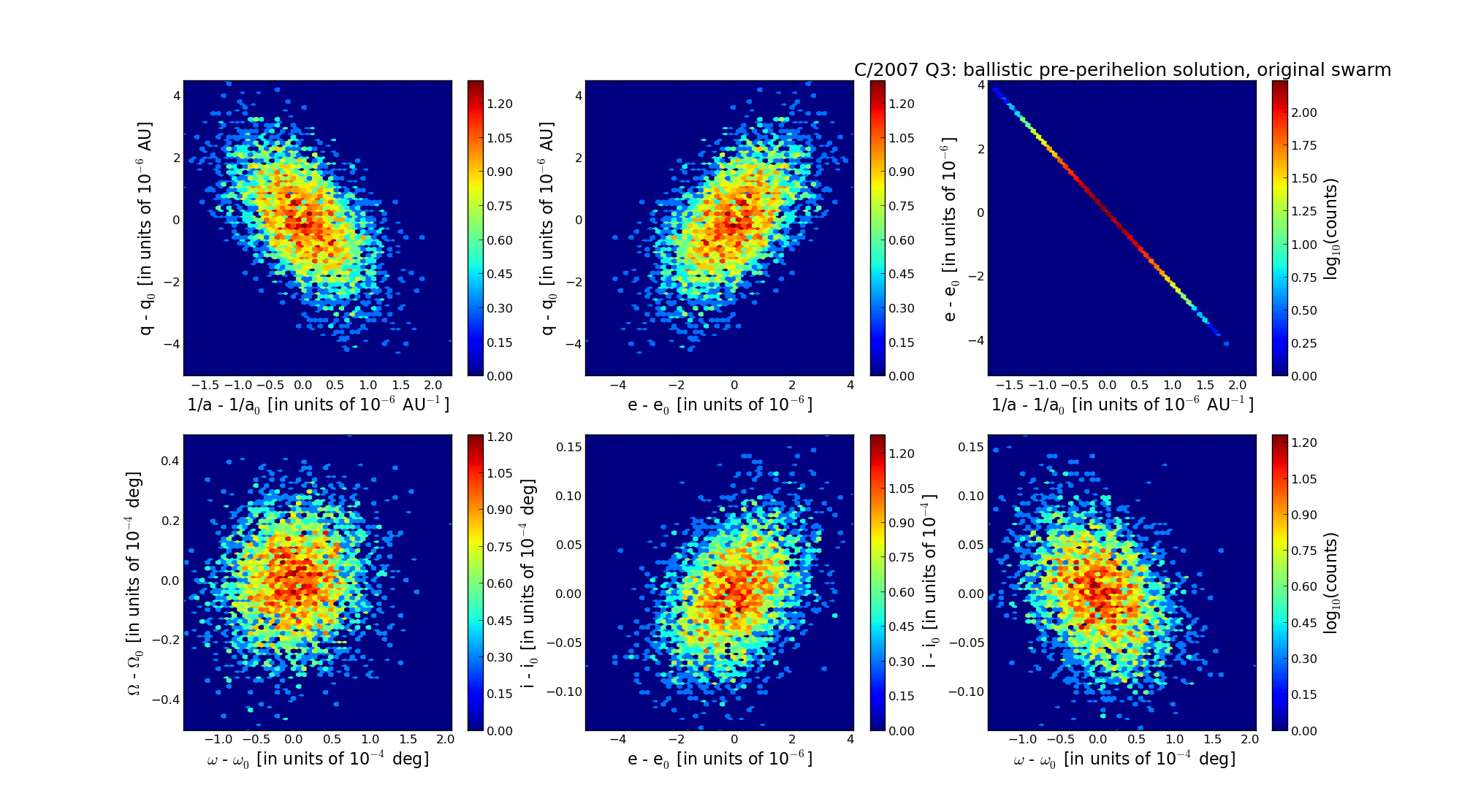
| Epoch (TT) | 17081213.0 | |
| time of perihelion passage (TT) | 20091007.094186 | ± 0.000147 |
| perihelion distance | 2.25545290 | ± 0.00000129 |
| eccentricity | 0.99990547 | ± 0.00000116 |
| argument of perihelion[deg] | 2.067678 | ± 0.000046 |
| longitude of the ascending node [deg] | 149.432150 | ± 0.000012 |
| inclination[deg] | 65.620427 | ± 0.000005 |
| inverse semimajor axis [10-6 au-1] | 41.91 | ± 0.53 |
| number of observations | 177 |
| number of residuals | 342 |
| data interval | 2010 June 8 — 2011 Sep. 25 (post-perihelion data) |
| rms [arcsec] | 0.66 |
| orbit quality class | 1a |
| Epoch (TT) | 20091016.0 | = JD 2455120.5 |
| time of perihelion passage (TT) | 20091007.262200 | ± 0.001604 |
| perihelion distance | 2.25171331 | ± 0.00001520 |
| eccentricity | 1.00025450 | ± 0.00000829 |
| argument of perihelion[deg] | 2.090673 | ± 0.000332 |
| longitude of the ascending node [deg] | 149.412480 | ± 0.000108 |
| inclination[deg] | 65.650754 | ± 0.000025 |
| inverse semimajor axis [10-6 au-1] | -113.02 | ± 3.68 |
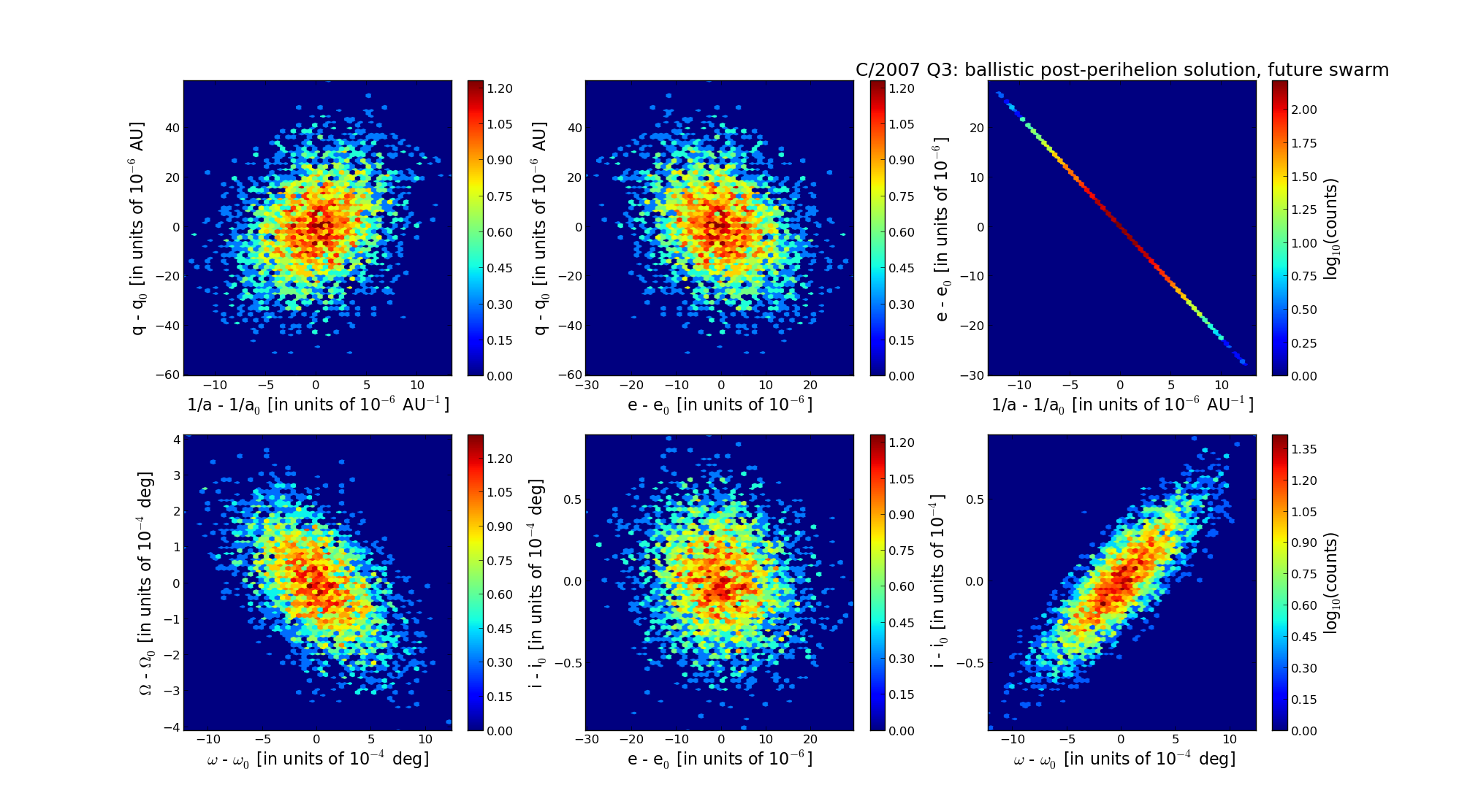
| Epoch (TT) | 23110815.0 | |
| time of perihelion passage (TT) | 20091007.619323 | ± 0.001618 |
| perihelion distance | 2.25376856 | ± 0.00001552 |
| eccentricity | 0.99970301 | ± 0.00000817 |
| argument of perihelion[deg] | 2.092267 | ± 0.000334 |
| longitude of the ascending node [deg] | 149.369798 | ± 0.000111 |
| inclination[deg] | 65.648034 | ± 0.000025 |
| inverse semimajor axis [10-6 au-1] | 131.77 | ± 3.63 |